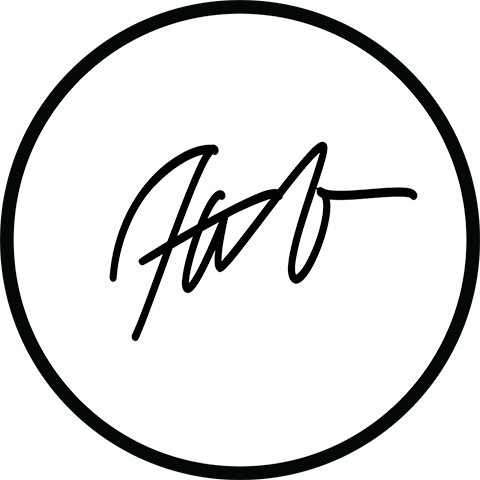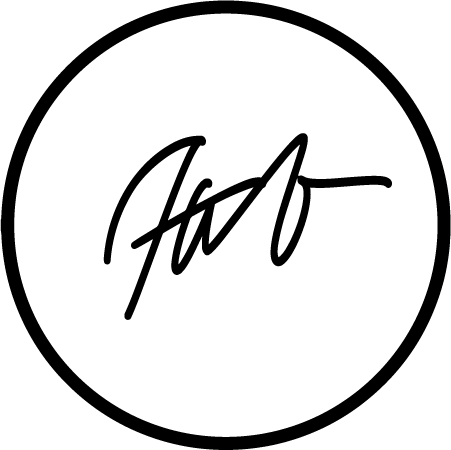Discover Your Personal Brand's WHY: Essential Strategies for Authentic Identity Building
a few words before we start
In today's fast-paced world, identifying your WHY—your core reason for being—can transform how you approach both your personal and professional life. This guide delves into the art and science of uncovering your purpose, offering a beacon for those seeking to align their actions with their deeper values and goals.
The importance of your WHY
Understanding your WHY is not just about personal or professional fulfillment; it's about connecting with your authentic self and making decisions that resonate with your core beliefs. It acts as a guiding star in times of uncertainty, helping you navigate through life's challenges with clarity and confidence.
Deep dive into discovering your WHY through STORYTELLING
Reflect on life-changing conversations and moments of introspection that have unveiled aspects of your identity. These stories are powerful tools for self-discovery, revealing patterns, values, and passions that define your unique WHY.
Case Study: The Power of Reflection
Consider the case of Alex, a software developer who discovered his WHY through storytelling. Initially viewing himself as just another cog in the machine, Alex realized his true passion lay in using technology to solve real-world problems, especially in education. This revelation came from sharing stories about his volunteer work teaching coding to underprivileged children, highlighting his commitment to making a difference. That could be you.
The heart of your WHY
Dive into the emotions and drives that push you toward certain activities. It's about more than just what you do; it's about the feelings and fulfillment those actions provide.
Self-Assessment Exercises
Engage in self-assessment exercises designed to peel back the layers of your daily activities and uncover the deeper reasons behind them. Questions like "What activities make me feel most alive?" or "When do I feel most fulfilled?" can unlock insights into your true passions and purpose.
Comprehensive tools for uncovering your WHY
SWOT Analysis
A detailed SWOT analysis can offer profound insights into your strengths, weaknesses, opportunities, and threats, laying the groundwork for personal growth and strategic planning.
Let’s start with a clear example: Lara is a lifestyle coach.
Now, we’re gonna help her have more clarity through the analysis.
Strengths:
Expertise and Knowledge: Profound understanding of health, wellness, and lifestyle management.
Personalized Service: Ability to tailor advice and coaching to individual client needs.
Strong Communication Skills: Effective in motivating and guiding clients.
Credibility and Reputation: Established trust and positive testimonials from past clients.
Networking: Strong connections with health professionals, gyms, and wellness centers.
Weaknesses:
Market Competition: High competition from other coaches and wellness professionals.
Scalability Limitations: One-on-one coaching model limits the number of clients served.
Dependency on Reputation: Business heavily reliant on personal reputation and client referrals.
Limited Resources: For independent coaches, resources for marketing and expansion might be limited.
Keeping Up with Trends: Need to continuously update skills and knowledge in a rapidly evolving field.
Opportunities:
Growing Health Consciousness: Increasing public interest in health and wellness.
Technological Advancements: Use of digital tools and platforms for remote coaching and wider reach.
Collaborations and Partnerships: Opportunities to collaborate with health centers, corporate wellness programs, and online platforms.
Diversifying Services: Expanding offerings to include group sessions, workshops, and online courses.
Global Market: Potential to reach international clients through online coaching.
Threats:
Economic Downturns: Personal coaching might be viewed as a luxury and could be affected in economic slowdowns.
Regulatory Changes: Potential changes in health and wellness coaching regulations.
Market Saturation: Growing number of lifestyle coaches entering the market.
Technological Disruptions: New tech-based solutions could disrupt traditional coaching methods.
Changing Consumer Preferences: Shifts in what clients seek from lifestyle coaching, such as more emphasis on mental health or specific diet trends.
Based on our findings about Lara, we have concluded that the core of her brand is a passion for helping clients achieve their health and wellness goals. This is evident from her strengths such as personalized service and excellent communication skills. Lara is driven by the desire to change people's lives by helping them unlock their full potential and live their best lives. At this point, you might be thinking, "Well, that's a very general WHY that almost every coach has," and you would be right. The difference lies in HOW Lara wants to empower people, what her process looks like, and how she can innovate this industry. However, without knowing her WHY, she wouldn't have a solid foundation to build upon.
The Five WHYs Technique
How the Five Whys Technique Works:
Start with a Statement: Begin with a statement of a problem or a situation you're dealing with.
Ask Why: Ask “Why?” in response to the statement. This first why should address the immediate reason or cause.
Go Deeper with Each Why: After each answer, ask “Why?” again, digging deeper each time. The goal is to progressively uncover layers of causes or motivations that lie beneath the surface.
Repeat Until the Root Cause or Core Reason is Revealed: Typically, by the time you ask the fifth why, you should reach a more fundamental cause or reason.
Reflect and Act: Once you've identified the root cause or core reason, you can reflect on this new understanding and plan actions or changes.
Example:
Situation: Imagine you're consistently working late hours and feeling dissatisfied.
First Why: Why am I consistently working late?
Answer: Because I have too much work to complete each day.
Second Why: Why do I have too much work each day?
Answer: Because I'm taking on more tasks than I can handle.
Third Why: Why am I taking on more tasks than I can handle?
Answer: Because I have a hard time saying no when my colleagues ask for help.
Fourth Why: Why do I have a hard time saying no to my colleagues?
Answer: Because I feel like they won’t respect me or I’ll let them down.
Fifth Why: Why do I feel that not helping will lead to a loss of respect or disappointment?
Answer: Because I am basing my self-worth on others' approval and not setting healthy boundaries.
Core Reason Identified: The root cause of working late is not just the workload; it's a deeper issue related to self-worth and the inability to set boundaries. This realization can lead to actionable steps like working on assertiveness, setting clear boundaries, and re-evaluating self-worth independent of others' opinions.
Example 2:
Imagine a personal brand centered around fitness coaching. The goal is to understand why fitness coaching is the chosen path.
Why do you want to be a fitness coach?
Because I want to help people get in shape.
Why do you want to help people get in shape?
Because I believe being in good physical condition improves overall life quality.
Why do you believe physical fitness improves life quality?
Because it boosts confidence, health, and energy, leading to more success and happiness in other life areas.
Why is boosting confidence, health, and energy important to you in your coaching?
Because I have experienced this transformation myself and it had a profound impact on my life.
Why did this transformation have a profound impact on your life?
Because it not only improved my physical health but also my mental wellbeing and my relationships, making me a more fulfilled and effective individual."
Through this process, the personal brand uncovers a deeper 'why': It's not just about fitness but a holistic transformation that impacts multiple aspects of life, leading to overall fulfillment. This insight can shape the brand's messaging, services, and audience engagement strategies.
Applying the Five Whys:
The Five Whys can be applied to a variety of situations, both personal and professional.
It’s important to be honest and open during the process. Sometimes, the answers can be uncomfortable or revealing.
This technique is especially useful for personal development, as it can reveal motivations and beliefs you might not be aware of.
Mind Mapping
The process of creating a mind map can spark new ideas and insights as you visually explore the connections between different pieces of information.
How Mind Mapping Works:
Start with a Central Idea: This is typically placed in the middle of your map. The central idea is the starting point of your mind map and represents the topic you are exploring.
Add Branches for Major Subtopics: From the central idea, draw branches outwards. Each branch represents a key theme or subtopic related to your central idea.
Expand with Sub-Branches: For each key theme or subtopic, add further branches to explore more detailed aspects of the idea.
Use Keywords and Images: Mind maps work best when you use single words or short phrases instead of long sentences. Images can also be a very powerful tool in a mind map. They can convey much more information in a single glance than a bunch of words.
Connect Ideas: If different sections of your mind map have a connection, draw lines between them. This helps in understanding the relationships between different parts of the topic.
Be Creative: There’s no right or wrong way to create a mind map. The more personal and creative it is, the more it will resonate with you.
Example:
Central Idea: Personal Development
Branch 1: Skills
Sub-Branches: Communication, Leadership, Time Management.
Branch 2: Health
Sub-Branches: Exercise, Diet, Mental Health.
Branch 3: Career
Sub-Branches: Networking, Career Goals, Education.
Branch 4: Personal Interests
Sub-Branches: Reading, Travel, Hobbies.
For each of these branches and sub-branches, you could go further. Under “Time Management,” you might add branches for “Prioritization,” “Tools,” and “Techniques.” Under “Diet,” you could branch out to “Nutrition,” “Meal Planning,” and “Healthy Recipes.”
The mind map for personal development might include images like a clock for time management, a brain for mental health, and so on. Connections might be drawn between “Exercise” and “Mental Health” to highlight the link between physical and mental wellbeing, or between “Networking” and “Career Goals” to show how one can influence the other.
Applying Mind Mapping:
Problem Solving: Break down the parts of a problem to explore solutions.
Brainstorming: Generate and connect ideas spontaneously.
Planning: Organize your thoughts for projects or personal goals.
Studying: Summarize and remember information for exams or learning.
Living your WHY
means embodying your core values and purpose in every aspect of your life and working consistently over time. This is a dynamic process – as you grow and evolve, so might your WHY. It's about adapting while staying true to your core principles.






